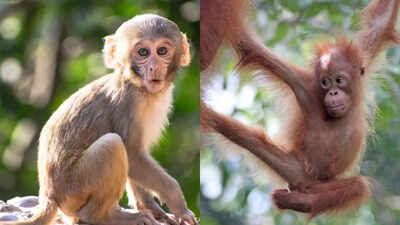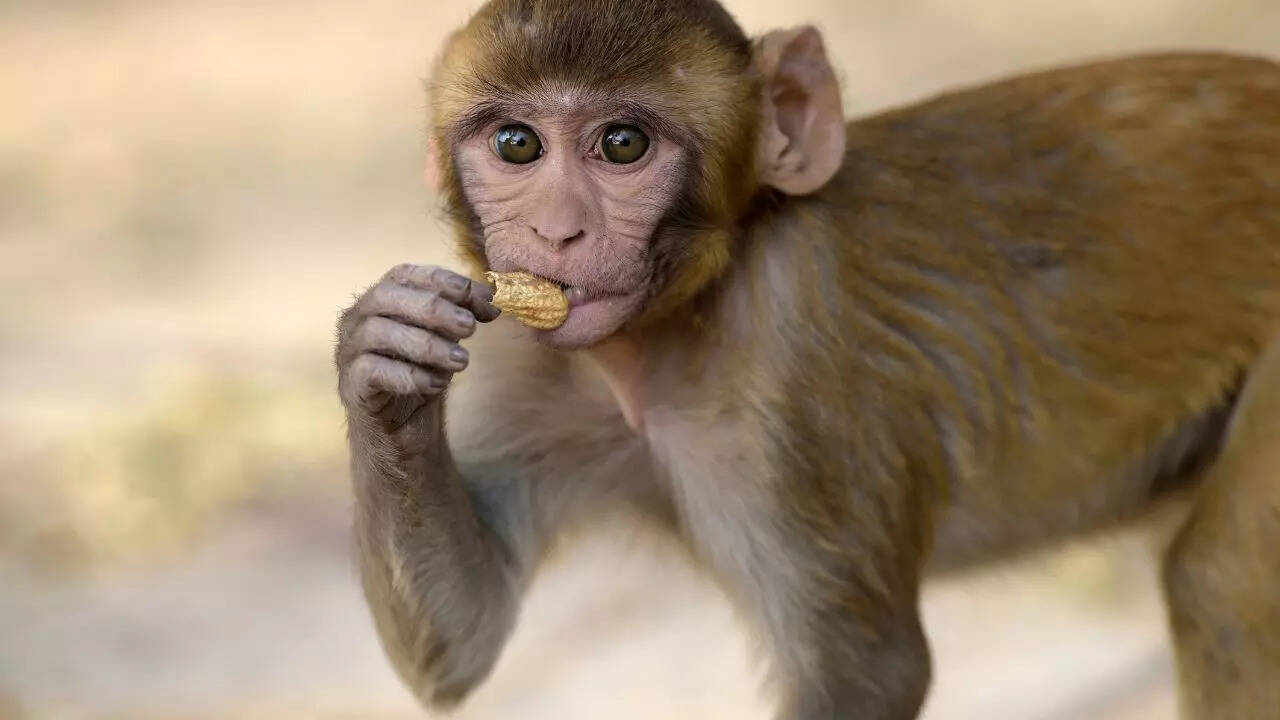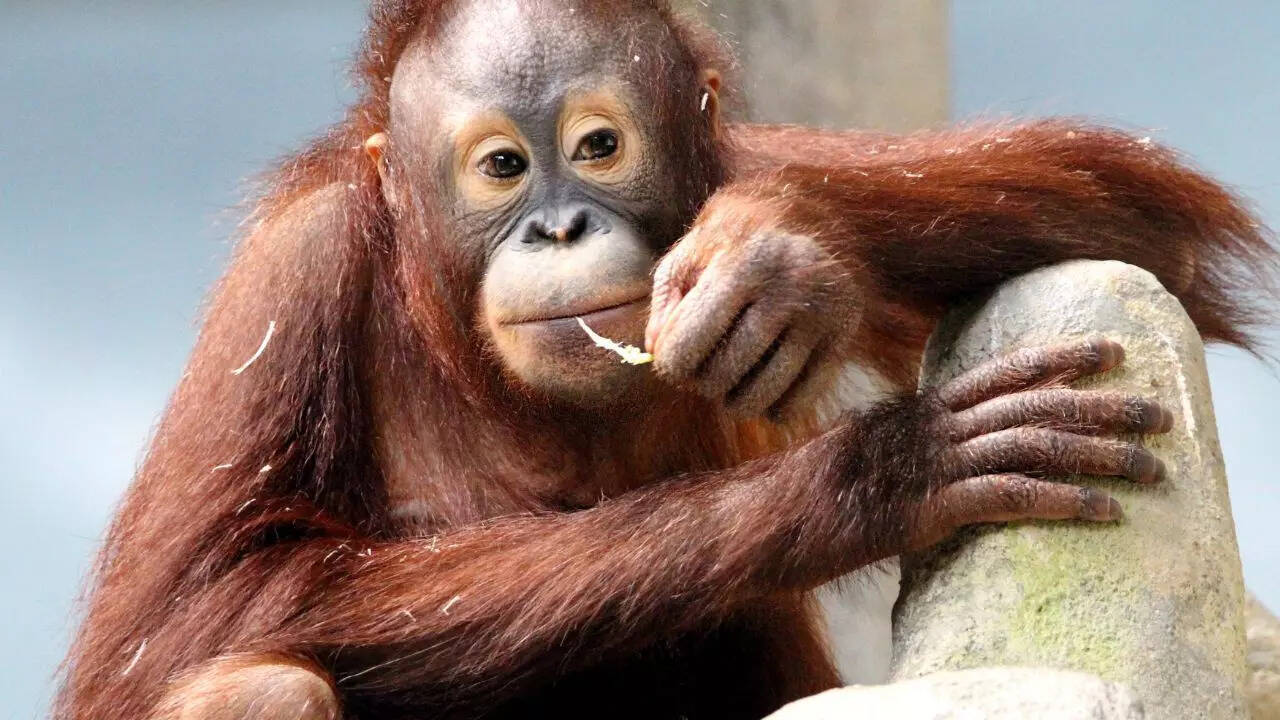ARTICLE AD BOX

Monkeys and apes are often grouped together in everyday language, but in the world of biology, they are quite different branches of the primate family tree. While both share intelligence, social behaviour, and close ties to humans, their anatomy, lifestyle, and evolution set them apart.
Monkeys are generally smaller, have tails, and thrive in diverse habitats across the globe, whereas apes are tailless, larger-brained, and capable of remarkable problem-solving and communication skills. Understanding these differences not only helps us appreciate their unique adaptations but also highlights the evolutionary story that ultimately connects them with us.
Monkeys and apes: Similar yet distinctive creatures
Monkeys and apes may seem similar, but they have some key differences.
For one, while all apes are primates, not all primates are apes.Monkeys are primates divided into two major groups: New World monkeys (found in Central and South America) and Old World monkeys (found in Africa and Asia), together representing over 260 species.

Apes belong to the superfamily Hominoidea, which includes gibbons (lesser apes) and the great apes, orangutans, gorillas, chimpanzees, bonobos, and humans, known for their larger brains, lack of tails, and complex social behaviour.

Visual and physical differences between monkeys and apes
| Feature | Monkeys | Apes |
| Tail | Usually present (some prehensile) | Absent |
| Size | Small to medium (few ounces to ~35 kg) | Medium to very large (up to 200 kg in gorillas) |
| Body structure | Narrow chest, less flexible shoulders | Broad chest, flexible shoulders for brachiation |
| Locomotion | Mostly quadrupedal, run along branches | Brachiation, knuckle-walking, or upright walking |
| Face and Features | Longer snouts, less expressive faces | Flatter faces, highly expressive with complex emotions |
| Brain size | Smaller relative to body | Larger relative to body, advanced cognition |
| Tool use | Rare and limited | Frequent, diverse, and innovative |
| Life span | Average 15–30 years depending on species | 30–60+ years depending on species |
Taxonomy and classification
- Monkeys: Belong to two major groups, New World monkeys (found in the Americas) and Old World monkeys (found in Africa and Asia). Together, they represent hundreds of species.
- Apes: Belong to the superfamily Hominoidea, including gibbons, orangutans, gorillas, chimpanzees, bonobos, and humans.
Monkeys branched off earlier in primate evolution, while apes are a more recent and advanced lineage.
One of the clearest differences is the tail. Monkeys almost always have one, while apes do not. Apes also have broader ribcages and more mobile shoulder joints, making them better suited for swinging through trees or even walking upright for short distances. Monkeys are typically lighter and more agile, while apes are heavier and more powerful.Facial features differ too: apes often display more human-like faces with a wide range of expressions, whereas monkeys tend to have longer snouts and less expressive faces.
Behavioural differences
Behaviour sets apes apart most strongly. Apes are highly intelligent, capable of learning sign language, solving puzzles, and displaying self-awareness. They form complex social groups with hierarchies, alliances, and cultural behaviours such as tool use.Monkeys, while also social and intelligent, generally rely more on instinct-driven behaviours. Their social structures tend to be less complex, although species like macaques and capuchins also display impressive cooperation and problem-solving.
Habitat and diet
- Monkeys: Found in a wide range of habitats including rainforests, savannahs, and mountains. Diets include fruits, leaves, insects, seeds, and small animals. New World monkeys often eat more fruit and insects, while Old World monkeys consume a varied diet including leaves and roots.
- Apes: Mostly found in Africa and Asia. Diets are diverse but dominated by fruits, leaves, bark, insects, and occasionally small animals. Apes such as chimpanzees even hunt cooperatively.
Lifespan
Monkeys generally live shorter lives, around 15–30 years depending on the species. In contrast, apes live longer, with chimpanzees and orangutans reaching 40–50 years, gorillas up to 50+, and humans of course far exceeding that.
Reproduction
- Monkeys: Tend to reproduce more quickly, with shorter gestation periods and multiple offspring over their lifetime.
- Apes: Reproduce more slowly, with long pregnancies (around 8–9 months in great apes), usually one infant at a time, and extended parental care lasting years.
This slower reproductive rate makes apes more vulnerable to extinction pressures.Also read | Labord’s Chameleon: The colour-changing lizard that lives for just four months



.png)
.png)
.png)
















 1 week ago
11
1 week ago
11







 English (US) ·
English (US) ·